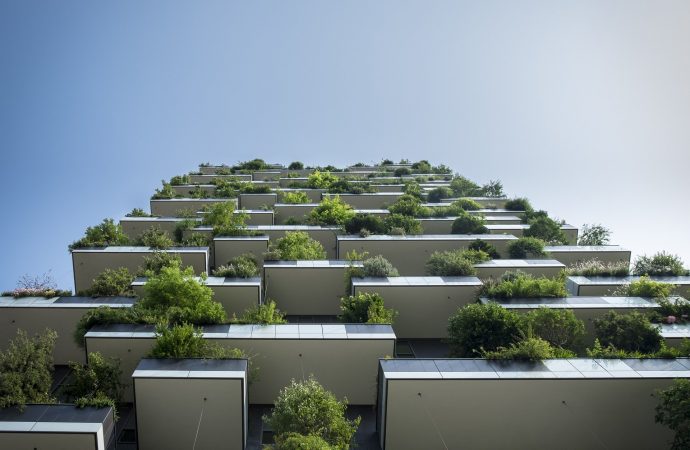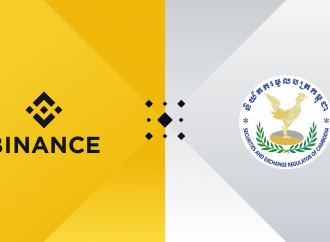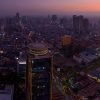Apart from the moral and ethical plus points that come with making sustainable investment choices, there are several key economic pull factors that make a case for investing in green buildings.

More and more, people are finding out more about going green. Studying search interest from Singapore, we see an increasing interest in Sustainability over the last 5 years. Apart from generic searches on the topic of Sustainability, topics such as UN Sustainable Development Goals and Sustainable Cities saw significant increases in search frequency. This reveals a growing awareness of the severity of climate change and global action taken to mitigate it.
How would these interests translate in the real estate sector? As part of the wider movement towards greater environmental consciousness, the green building movement has taken off.
Earlier in March this year, Singapore’s Building and Construction Authority (BCA) and the Singapore Green Building Council (SGBC) announced the co-creation of a Green Building Masterplan 2020. The plan outlines intentions to raise the minimum energy performance standards of both new and existing buildings in the coming years.
Garden City 2.0: What are Green Buildings?
These green buildings are developments – home, office, school or any type of building structure- that reduce or eliminate the negative environmental impacts of urban living, whether that’s through their design, construction or operation. For example, when it comes to construction, these buildings are made ‘green’ through using renewable energy sources such as solar energy, or using materials that are non-toxic, ethical and sustainable.
In Singapore, green buildings are certified under the Green Mark Scheme, administered by the Building and Construction Authority. As of this year, Singapore has made more than 40% of its buildings ‘green’, and is on track to meet the target of 80% by the next decade.
Benefits of Investing in Green Buildings
As these green buildings reduce harm to the environment through less water, energy and natural resource usage, one of the biggest benefits of green buildings is an ethical, environmental one. However, apart from the eco-friendly advantage, here are other reasons to invest in green buildings – whether it’s of the private housing sort or an office building.
Higher resource efficiency, lower operating costs
With eco-friendly construction and design features that enable more efficient use of energy and water, green buildings can decrease your operational cost, thus increasing your net operating income (NOI). This boost to your NOI would in turn boost your property value.
Statistics from a recent International Finance Corporation (IFC) report reveal that fitting out your commercial property with green technology could decrease operational costs by up to 37%. In personal private property, owners of green homes report saving an average of 15% to 20% on utility bills. For buildings that incorporate recycling measures, waste output can be reduced by 90% while using 30% less energy, leading to a 5% increase in NOI compared to typical buildings.
In the long-term, owning an eco-friendly property also means having lowered maintenance cost, as the use of technologies with longer lifespans and more durability lead to lowered need for replacement work to be done.
Future-proofing your real estate investment portfolio
Investing in green buildings can go a long way. As sustainability shifts from being a “new niche” to a norm across sectors ranging from fast-moving consumer goods to consumer durables, the scene in the real estate industry will be no different. As part of the wider consumer shift towards sustainable consumption, buyers will be more willing to pay for homes with clean, green attributes.
With more and more older millennials entering the real estate buyer market, the real estate market would have to adapt. Raised with a set of core values that include a strong duty for ensuring environmental-friendliness, these millennial buyers are looking for high-performance, energy-efficient, healthier-for-the-planet property.
Investing in green buildings would save you the future cost of selling your property at a discounted price, or engaging in expensive retrofitting work of your traditional building in order to maintain competitiveness in the market.
If you own a commercial building, owning a non-green building may run you the risk of losing tenants as they want to move to more energy-efficient, greener buildings for greater occupational comfort and satisfaction, and an overall improved working environment. Traditional buildings are more likely to cause “Sick Building Syndrome” (SBS), where building occupants spending prolonged time in the building experience detriments to their health, manifesting in headaches or respiratory discomfort caused by poor ventilation and poor air quality.
With people spending so much time in indoor environments within buildings, green design features improving air quality can help to reduce SBS, thus in turn improving workplace productivity.
The Potential of the Green Building Market in Asia
Outside of Singapore, the Green Building market holds great promise in the region, for investors looking to venture further. In 2019, the International Finance Corporation (IFC), a global development institution and sister organisation of the World Bank, published an in-depth report[1] on green buildings, highlighting best practices by investors, governments, developers and owners for green buildings. The report identified green buildings as one of the largest investment opportunities in the coming decade: by 2030, it’s poised to become a sector worth a whopping $24.7 trillion across emerging market cities.
A sizable $17.8 trillion of this investment potential lies across East Asia Pacific and South Asia- a region where more than 50% of the world’s urban population would call home by 2030, based on a recent study produced by the Population Division of the UN Department of Economic and Social Affairs (UN DESA).
[1] Green Buildings: A Finance and Policy Blueprint for emerging markets. (2019) https://www.ifc.org/wps/wcm/connect/a6e06449-0819-4814-8e75-903d4f564731/59988-IFC-GreenBuildings-report_FINAL_1-30-20.pdf?MOD=AJPERES&CVID=m.TZbMU
















